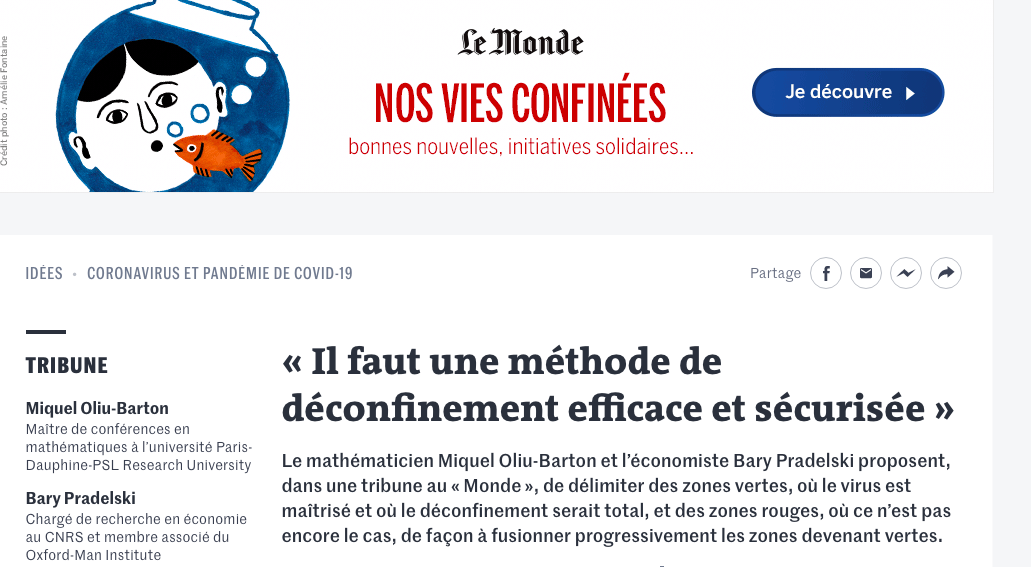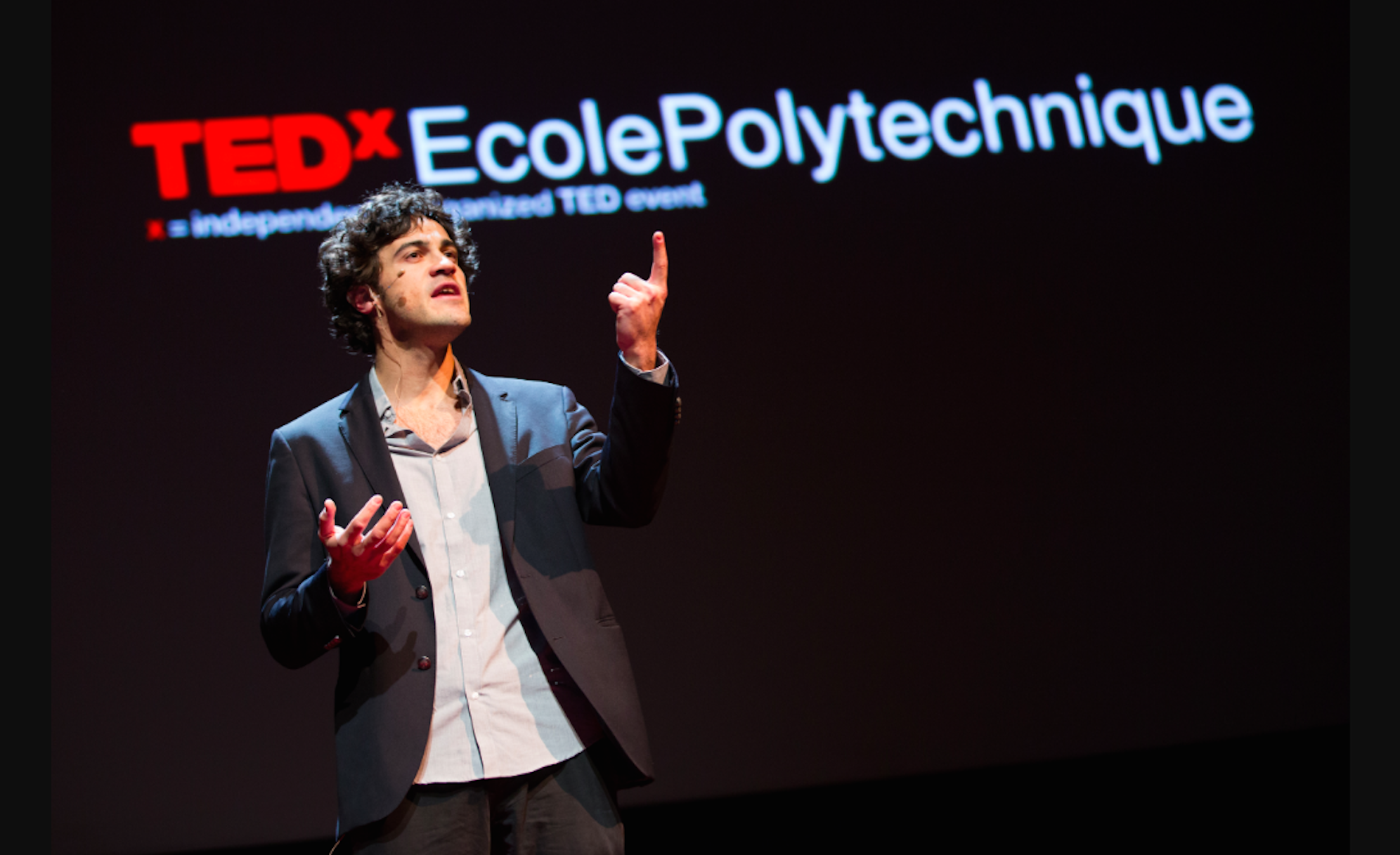A Catalan mathematician and expert in game theory at Paris Dauphine University has proposed an "effective and safe" method for the process of lifting lockdown in France. Writing in the Le Monde newspaper, the mathematician, Miquel Oliu-Barton, puts forwards a plan which he claims would substantially reduce damage to the economy, and would also fully respect individual privacy. It's partially inspired in the "six degrees of separation" theory of social connection, and indeed, in Facebook.
Under his method, the deconfinement would take place in three stages: "First, France would be divided into territories of an appropriate size, having a population of about 10,000; second, "green areas" where the virus is absent or under control would be identified; and third, these green areas would be progressively merged together as they became virus-free, so that they would be become ever-larger".

In the article, co-written with economist Bary Pradelsky, it is estimated that in a period of 2 to 4 months, the whole of France could be merged into a single green zone. The key to the method is the great agility which it allows in the handling of the territory, maintaining red zones closely monitored, while nearby green zones could be combined and normal life resumed.
The economics professor developed this programme in a paper for the Esade Business School, entitled "Exit strategy: from self-confinement to green zones".
Miquel Oliu-Barton writes that the method has been inspired to an extent by the way that a social network like Facebook works. "We are all familiar with Facebook, where each person has around 300 friends on average, and each of these connections can be regarded as a link in the network. The distance between two people is measured by the number of intermediate links between them. The idea of 'six degrees of separation', first formulated in the 1920s, theorizes that everyone in the world can be reached within at most six links,” writes Oliu-Barton.
In his view, with an epidemic like coronavirus the same pattern occurs, but based on the factor of physical proximity. This is what motivated many countries to opt for lockdown to bring the spread of the virus to a halt.
He asserts that in the easing of lockdown what must be taken into account is the initial structure of the network. “Instead of imposing a radius of movement for each individual, we propose allowing people to move within defined areas that have been isolated, which may be cities or districts, so that the network of physical proximity would be divided into pieces, disconnected from one another”, he explains. Travel right across the territory would thus be avoided.
From this starting point, the proposal is to gradually combine safe areas, the so-called green areas, with the help of a high level of testing.
"We believe that this second phase could be organized in a safe, efficient and easily controllable way. By reconstructing society and its economic interactions via the progressive expansion of green areas, we will reach the full reunification of the country within two to four months,” he says.
"Our approach does not require monitoring of members of the public on a personal level, and therefore respects individual privacy. And it is an approach that is compatible with most of the measures that are currently being debated," he argues.

